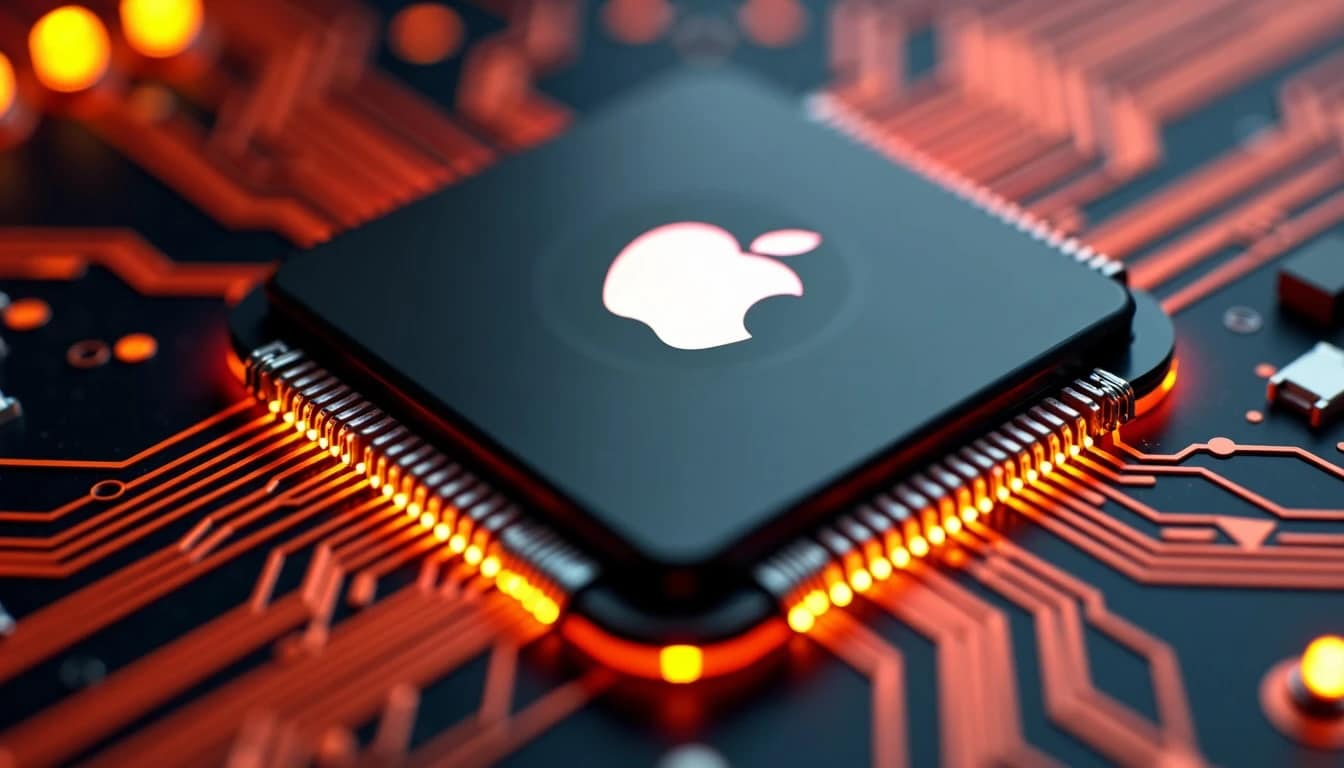Apple has taken a significant step forward in the development of its processor line by beginning mass production of its new M5 chip, designed to enhance its flagship devices, such as the Mac and iPad ranges. According to industry sources, the company has implemented innovative manufacturing technologies aimed at improving performance in artificial intelligence (AI) and energy efficiency.
M5 Production and Assembly
Since last month, Apple has initiated the packaging phase of the M5, a critical process that protects the chip and allows its integration into various devices. For the chip’s core manufacturing, the company continues to rely on TSMC, the world’s largest contract semiconductor manufacturer, which is utilizing its advanced 3-nanometer process (N3P). This new process offers a 5 to 10% improvement in energy efficiency and a 5% increase in performance compared to the previous generation.
The final assembly of the M5 is being managed by three companies specialized in semiconductor packaging: ASE in Taiwan, Amkor in the U.S., and JCET in China. ASE was the first to start production, while Amkor and JCET will join in the upcoming phases.
Variants and Implementation Roadmap
The M5 lineup will feature multiple versions tailored to different needs: M5 Standard, M5 Pro, M5 Max, and M5 Ultra. Currently, manufacturers are investing in new production lines for the more advanced models, indicating that these chips will be available in future high-end devices.
According to industry experts, the first devices to integrate the M5 could be the new iPad Pro, before its rollout in the MacBook Pro line and other high-performance Apple products.
Key Technological Innovations
Apple has incorporated significant advancements in the design of the M5 to optimize its performance in AI tasks and graphics processing. Among the most notable innovations are:
- Utilization of TSMC’s SoIC-MH packaging process in the Pro versions and above, allowing for a vertically stacked chip structure. This technology enhances thermal dissipation and chip performance.
- Application of hybridization with copper bonding, facilitating a more efficient interconnection of transistors.
- Wafer cutting with femtosecond laser technology, minimizing damage and contamination during the manufacturing process, ensuring higher quality and performance of the chip.
- New substrate layers on the motherboard, made with an advanced version of ABF (Ajinomoto Build-up Film), allowing for higher circuit density within the chip structure.
Market Impact and the Future of Apple Silicon
The launch of the M5 reflects Apple’s strategy to strengthen its position in the high-performance chip market and compete in the field of artificial intelligence. With a growing demand for AI-optimized devices, this advancement places the company in a competitive position against other semiconductor manufacturers.
Mass production plans continue to expand with investments in substrate manufacturers like Unimicron in Taiwan and Samsung Electro-Mechanics in South Korea, ensuring Apple’s capacity to meet market demand.
The evolution of Apple Silicon chips has been key in differentiating the company’s products, and with the M5, Apple aims to reaffirm its leadership in performance, efficiency, and optimization for the new era of AI-based computing.
via: ETnews

